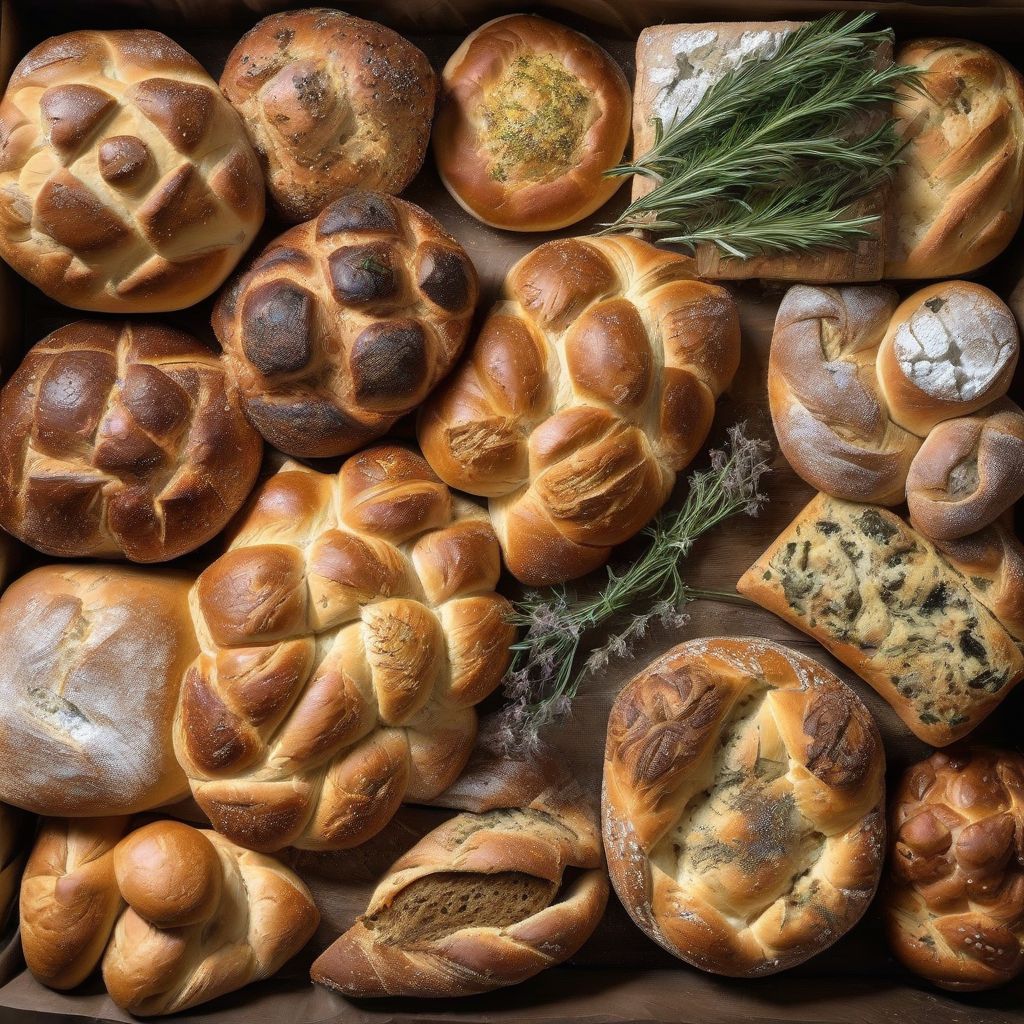Have you ever bitten into a slice of sourdough bread and marveled at its complex flavor and airy texture? That, my friend, is the magic of fermentation at work. Beyond the classic sourdough, fermentation has the power to transform ordinary savory bread recipes into extraordinary culinary experiences.
As a nutritionist and meal prep coach, I’m passionate about helping people live healthier lives through delicious and nutritious food. And let me tell you, fermented savory breads check both boxes! They’re not only incredibly flavorful but also easier to digest and packed with gut-friendly probiotics.
In this article, we’ll delve deep into the world of fermentation and explore how it impacts your favorite savory bread recipes. We’ll uncover the science behind the magic, the health benefits it offers, and even provide you with tips to incorporate these wonderful breads into your diet. Let’s get started!
The Science Behind the Sourdough: Understanding Fermentation
Fermentation, in simple terms, is the process where microorganisms like yeast and bacteria break down carbohydrates (like sugars) in the dough. This process produces byproducts like carbon dioxide, alcohol, and acids, each contributing to the unique characteristics of fermented bread.
The Role of Yeast and Bacteria: A Microscopic Symphony
- Yeast: This tiny fungus is responsible for the airy texture of your bread. It consumes the sugars in the dough and releases carbon dioxide, creating those desirable air pockets.
- Lactic Acid Bacteria (LAB): These friendly bacteria are the stars of the show when it comes to flavor. They produce lactic acid, which gives sourdough its signature tangy flavor and also helps inhibit the growth of harmful bacteria.
This beautiful interplay of yeast and bacteria is what sets fermented bread apart from its commercially yeasted counterparts.
Unleashing the Flavor: How Fermentation Enhances Savory Breads
Fermentation doesn’t just make bread rise; it unlocks a depth of flavor that’s simply unattainable with commercial yeast alone. Here’s how:
- Tangy Complexity: The lactic acid produced during fermentation contributes a delightful tanginess that balances out the richness of savory ingredients like cheese, herbs, and olives.
- Enhanced Flavor Profile: Fermentation breaks down complex carbohydrates into simpler sugars, enhancing the natural sweetness of the dough. This creates a more nuanced flavor profile that complements savory ingredients.
- Improved Texture: The acids produced during fermentation modify the gluten structure in the dough, resulting in a chewier texture that holds its own against robust fillings and toppings.
Imagine a rosemary and olive oil focaccia, its crust crackling with each bite, the aroma itself a symphony of herbs and fermented goodness. That’s the power of fermentation!
 Savory Bread Basket
Savory Bread Basket
Beyond Taste: The Health Benefits of Fermented Savory Breads
Remember those friendly LAB we talked about? They do more than just enhance flavor; they offer a range of health benefits:
- Improved Digestibility: Fermentation breaks down gluten and other hard-to-digest compounds, making the bread easier to digest, especially for those with gluten sensitivities.
- Increased Nutrient Availability: Fermentation makes nutrients like iron, zinc, and B vitamins more readily available for absorption by the body.
- Boosted Gut Health: Fermented foods are natural sources of probiotics, which are beneficial bacteria that contribute to a healthy gut microbiome. A balanced gut microbiome is linked to improved digestion, immunity, and even mental well-being.
Tips for Incorporating Fermented Savory Breads into Your Diet
Ready to experience the magic of fermentation in your kitchen? Here are some tips to get you started:
- Start with a Simple Recipe: Don’t be intimidated by the fermentation process. Begin with a basic recipe for no-knead sourdough or a simple fermented pizza dough.
- Experiment with Flavors: Once you’re comfortable with the basics, let your creativity run wild! Add herbs, spices, cheeses, or even vegetables to your dough to create unique flavor combinations.
- Make It a Family Affair: Get the whole family involved in the bread-making process. From feeding the starter to shaping the dough, baking fermented bread can be a fun and rewarding experience for everyone.
Expert Insight
“A well-fermented bread is more than just food; it’s a testament to time, patience, and the transformative power of nature. Embrace the process, and your taste buds (and gut) will thank you.” – [Insert Name of Renowned Baker or Chef]
Embrace the World of Fermented Breads
Fermentation is an art form, a slow and deliberate process that transforms simple ingredients into something truly extraordinary. So, the next time you’re looking for a way to elevate your savory bread recipes, consider the magic of fermentation. Your taste buds—and your health—will thank you.
[amazon bestseller=”sourdough baking books”]
